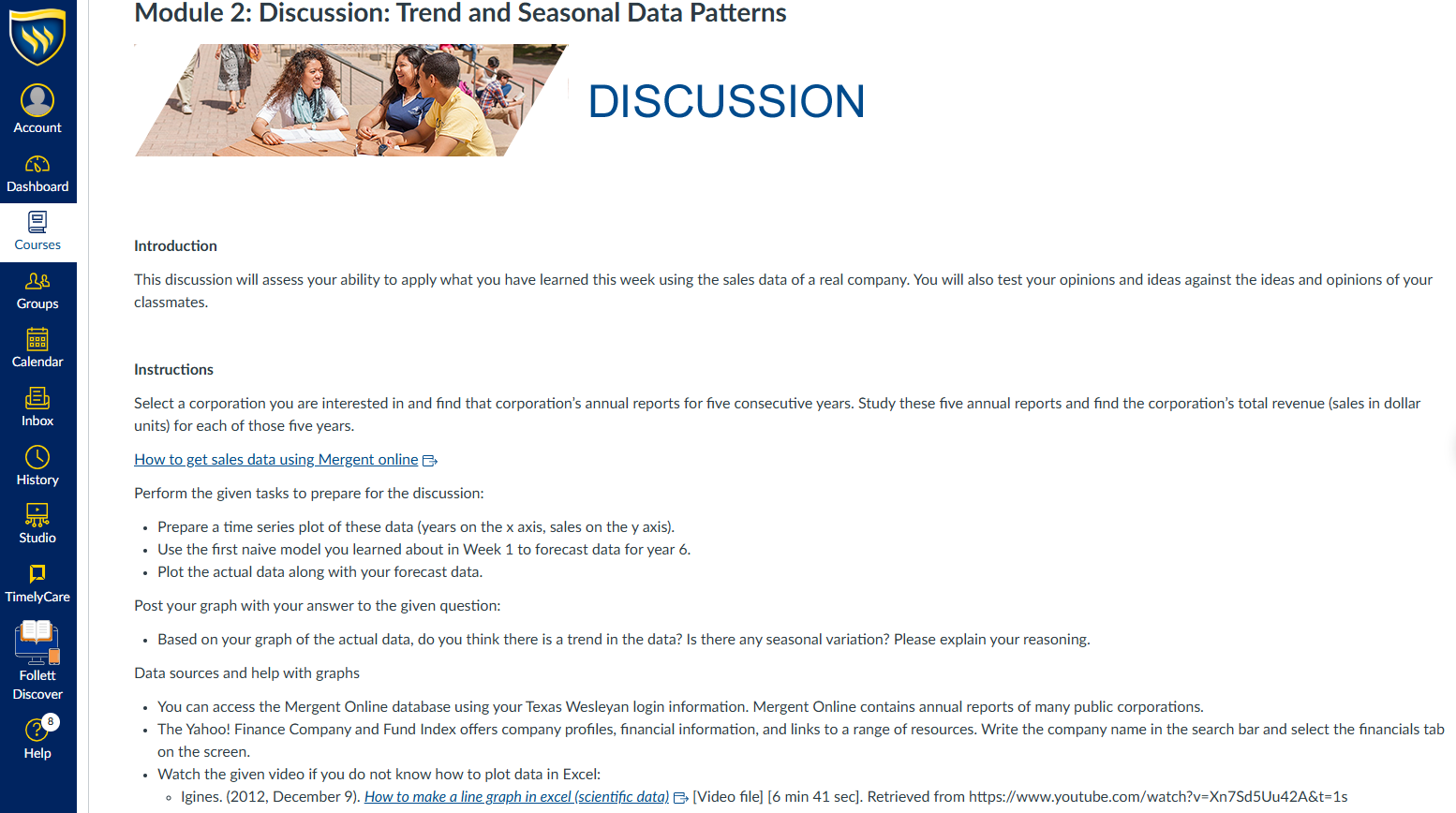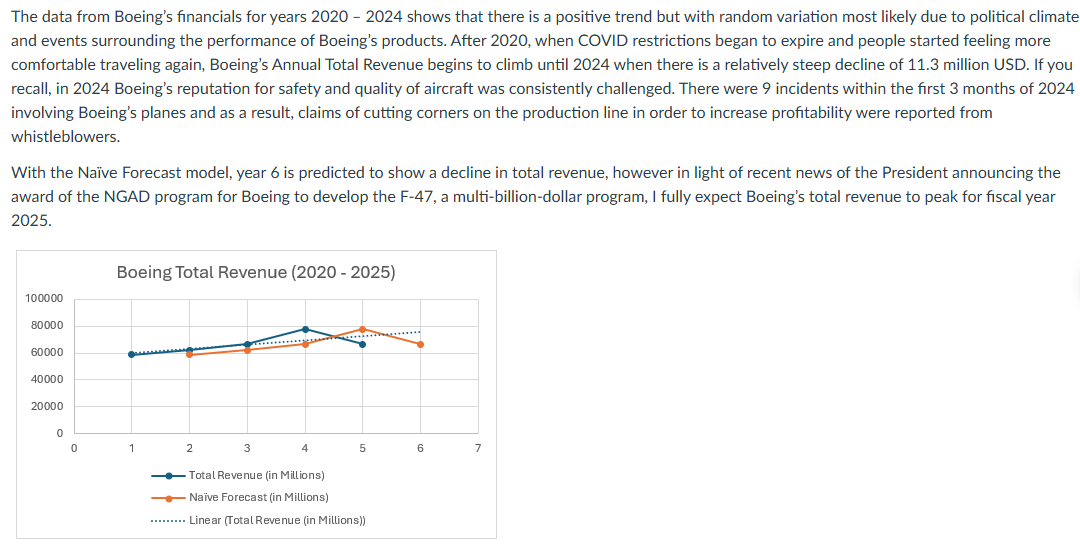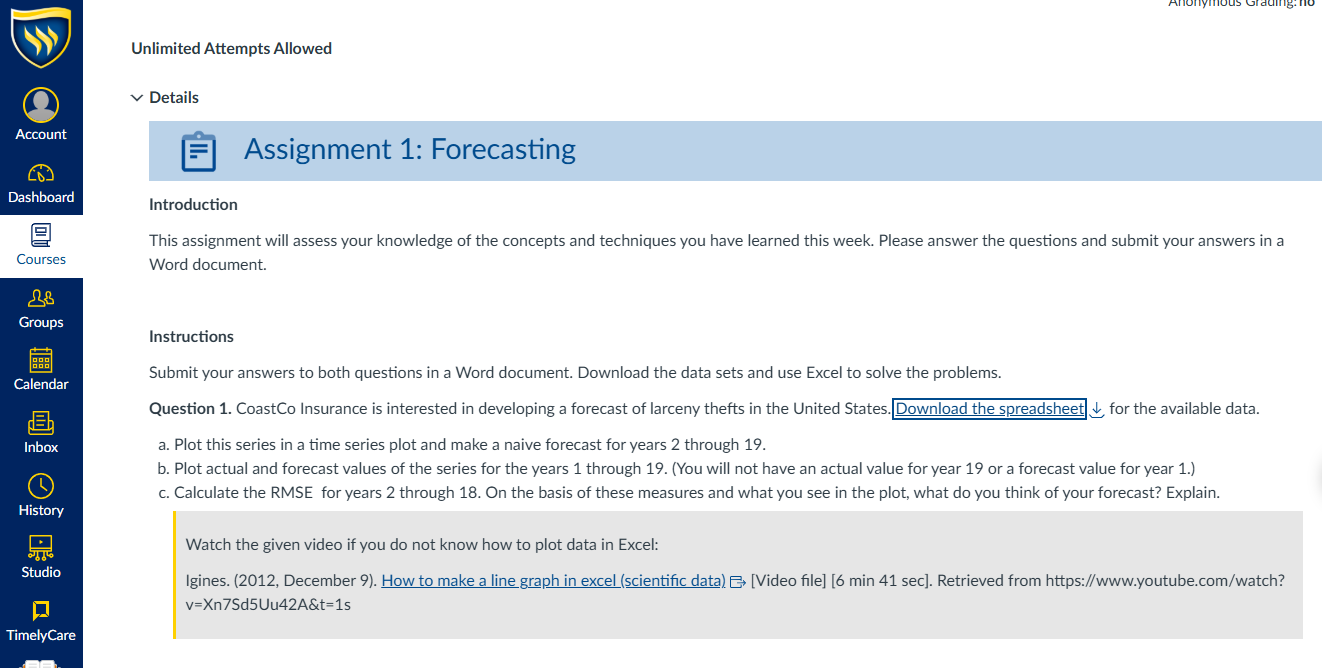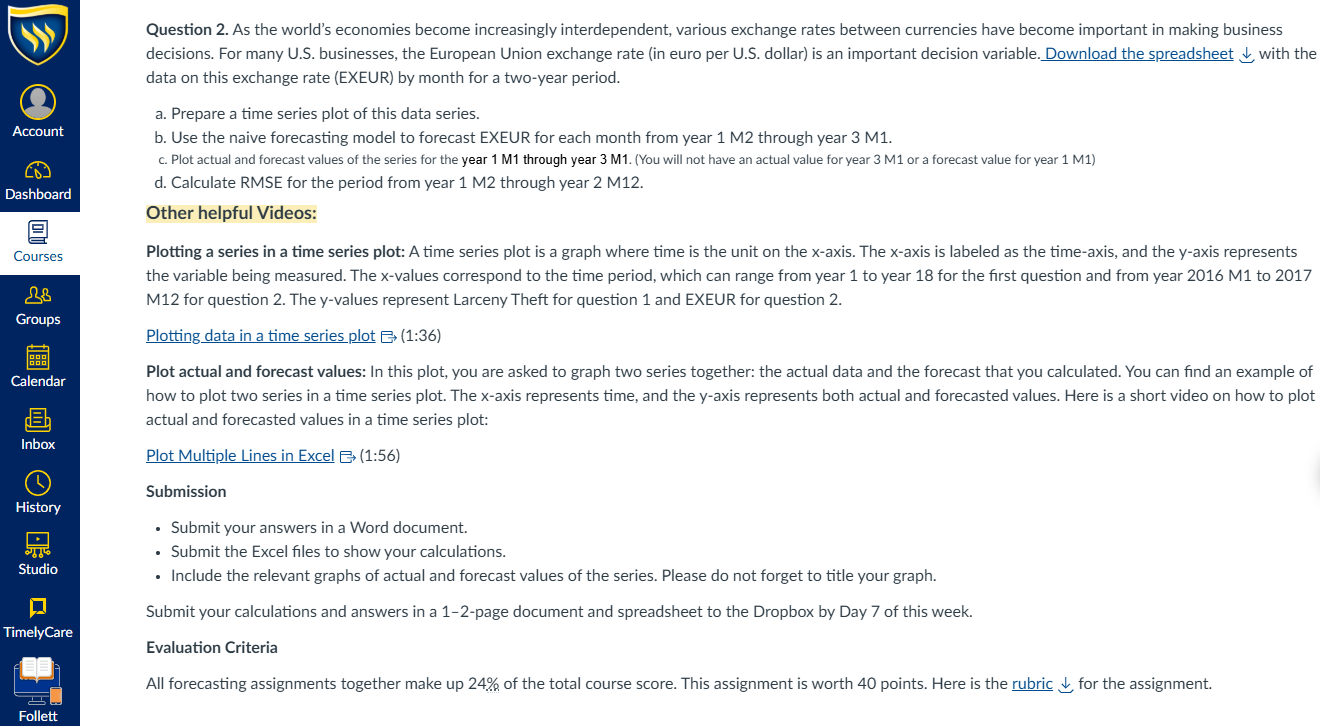ECO 6214 : Module 1, Discussion: Qualitative and Quantitative Forecasting Methods
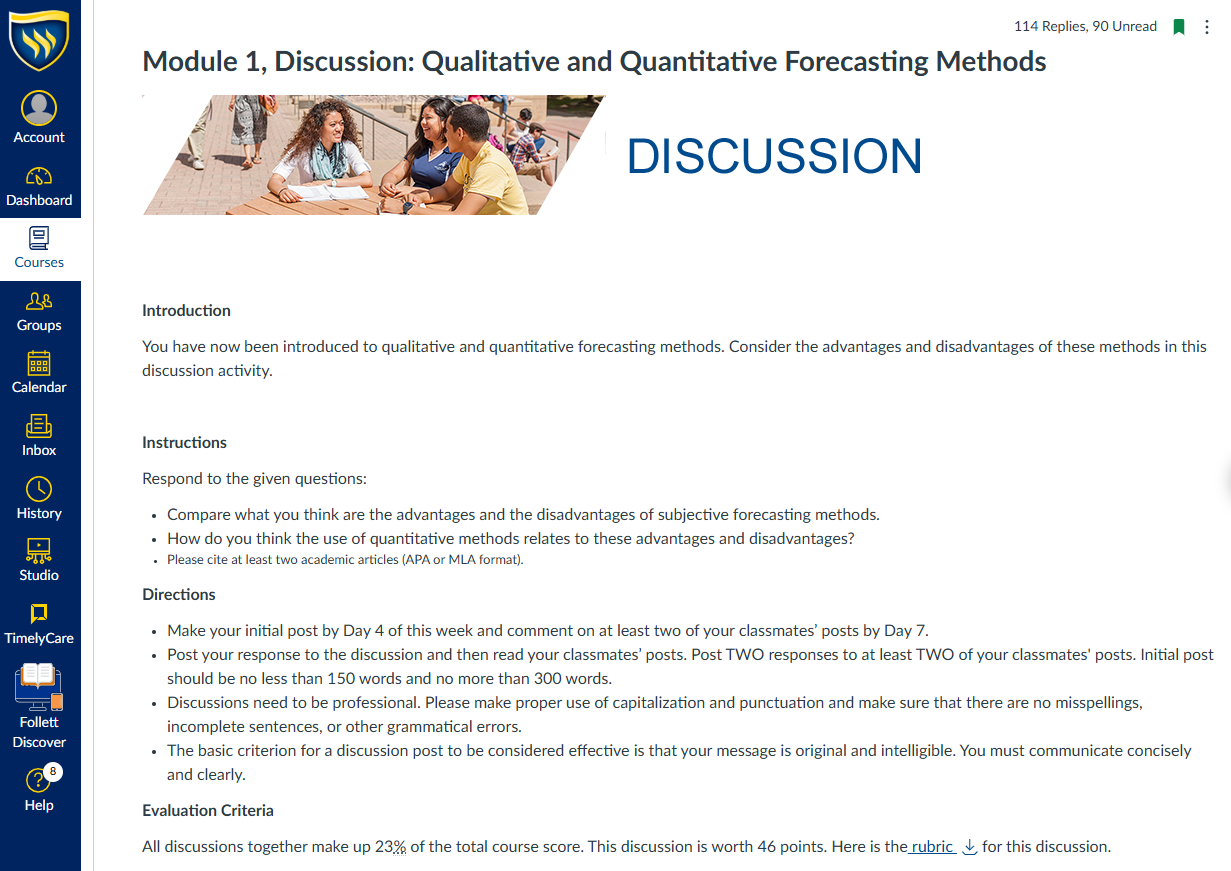
Introduction
You have now been introduced to qualitative and quantitative forecasting methods. Consider the advantages and disadvantages of these methods in this discussion activity.
Instructions
Respond to the given questions:
- Compare what you think are the advantages and the disadvantages of subjective forecasting methods.
- How do you think the use of quantitative methods relates to these advantages and disadvantages?
- Please cite at least two academic articles (APA or MLA format).
Directions
- Make your initial post by Day 4 of this week and comment on at least two of your classmates’ posts by Day 7.
- Post your response to the discussion and then read your classmates’ posts. Post TWO responses to at least TWO of your classmates' posts. Initial post should be no less than 150 words and no more than 300 words.
- Discussions need to be professional. Please make proper use of capitalization and punctuation and make sure that there are no misspellings, incomplete sentences, or other grammatical errors.
- The basic criterion for a discussion post to be considered effective is that your message is original and intelligible. You must communicate concisely and clearly.
Expert Answer
Subjective forecasting methods can be valuable, especially when there is insufficient data to rely on. One of the most significant benefits is their flexibility—experts can adjust their forecasts based on new information or sudden changes, something quantitative methods can struggle with if there is no historical data to work from. These methods also bring in the insight of people with deep knowledge of the subject, which can be critical in situations where things are uncertain or complex to predict.
That said, subjective forecasting is not without its flaws. It is highly vulnerable to biases, like overconfidence or personal experience, which can skew predictions (Sharma, 2024). Unlike quantitative methods, measuring how accurate a subjective forecast is is complex, making it hard to trust in high-stakes scenarios.
Quantitative methods, on the other hand, are more reliable when there is solid data to work with. They are objective and consistent, which makes them great for stable situations (Verhoef & Casebeer, 1997). However, they can miss the bigger picture, especially in unpredictable environments or when qualitative factors matter. Ultimately, combining both approaches can often be the best way to go. Quantitative methods provide a data-backed starting point, while subjective insights can help fill in the gaps and adjust for the unknowns that data cannot always predict.
References:
1. Sharma, G. (2024, March 19). Optimizing demand forecasting: Challenges and best practices. Institute for Supply Management. https://www.ismworld.org/supply-management-news-and-reports/news-publications/inside-supply-management-magazine/blog/2024/2024-03/optimizing-demand-forecasting-challenges-and-best-practices/Links to an external site.
2. Verhoef, M. J., & Casebeer, A. L. (1997, March). Broadening horizons: Integrating quantitative and Qualitative Research. The Canadian journal of infectious diseases = Journal canadien des maladies infectieuses. https://pmc.ncbi.nlm.nih.gov/articles/PMC3327344/Links to an external site.
3. Wilson, J. H., & Keating, B. (2018). Forecasting & predictive analytics: With ForecastX. McGraw-Hill/Irwin.
